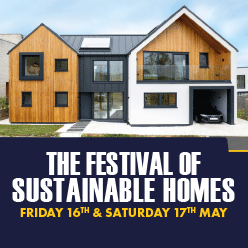In case you missed it see what’s in this section
Let's Talk
Thermal imaging tech at Bristol Zoo Gardens gives crocs their creature comforts
Innovative thermal imaging tech has been used in Bristol Zoo Gardens’ Reptile House to identify where the enclosure to over 120 reptiles may be losing heat.
An energy efficiency survey was conducted in the enclosure, home to 40 species, through Bristol-based not-for-profit C.H.E.E.S.E (Cold Homes Energy Efficiency Survey Experts), in partnership with Bristol Energy and Bristol Energy Network.
The C.H.E.E.S.E survey identified where the building is losing heat and suggested remedies to the zoo, in exactly the same way as the C.H.E.E.S.E surveys carried out on regular homes in the Bristol area.
The survey took place as part of Bristol Zoo Gardens’ sustainability action plan to understand in more detail how energy is used at the 185 year old site, and develop a carbon reduction plan.
Using award-winning thermal imaging technology, the survey was funded by 100% green electricity and lower carbon gas provider Bristol Energy.
It was carried out by surveyor Brian Harper in the Reptile House; home to a host of reptiles and amphibians, from crocodiles to geckos, including the zoo’s 28 stone, 90-year-old giant tortoise ‘Biggie.’ Half of the reptiles are currently classified as endangered or critically endangered.
Brian has been at the forefront of thermal imaging for 45 years, having originally helped develop the innovative survey process.
Elinor Kershaw, Sustainability and Projects Co-ordinator at Bristol Zoo Gardens, which is operated by conservation and education charity Bristol Zoological Society, said: “We have learnt a lot about how the building works which we could never have seen from looking at the equipment and the energy bills alone. It was also fascinating to see the animal enclosures and some of the animals through thermal imaging.
“The videos taken during the survey will be reviewed to prepare an internal report on the building. We also plan to share the results and information on the heat-mapping process with our Green Team and wider staff.”
Jon Sankey, Energy Services Strategy Manager at Bristol Energy, said: “As one of Bristol’s favourite attractions, supplied by Bristol Energy’s green electricity and lower carbon gas, we were pleased to be able to help the zoo investigate what energy efficiency measures are required to save them money, reduce their energy consumption and cut their carbon emissions.
“Bristol has declared a climate emergency, and most recently, an ecological emergency. One way to take action and make a positive difference is by ensuring your homes and businesses are energy efficient.
“A C.H.E.E.S.E survey is a great way for people to embark on their energy efficiency journeys and we are looking forward to more joint projects in the future.”
The C.H.E.E.S.E project is a member of, and supported by, Bristol Energy Network.
David Tudgey, Project Development Officer at the Bristol Energy Network, said: "We are proud to be working with Bristol Energy to enable and support the development of community energy projects such as the C.H.E.E.S.E project to accelerate climate action in the city."
The survey’s methodology draws on research suggesting that when you show homeowners pictures of wasted energy escaping from their houses, they are five times more likely to take action. It is estimated that 30% of heat loss in homes is due to draughts, which can be cheaply and easily fixed once they’ve been identified.
Details on the technology can be found here.
Weather in Bristol
Listings


















